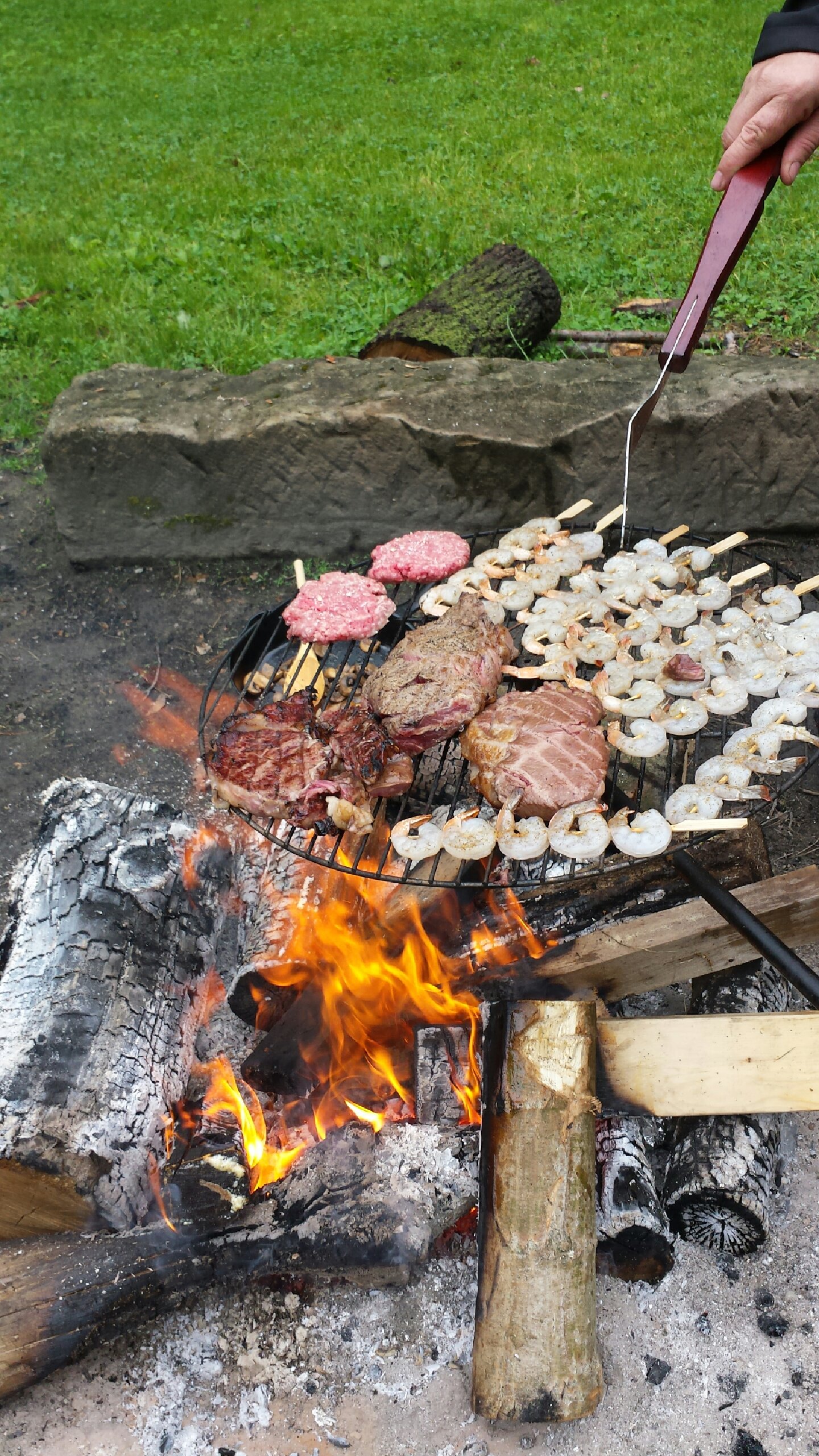 One of my favorite things about summer is eating outside. Really, not just on a picnic table, but cooking food over an open fire or packing a snack or light meal to eat while riding the horses. Whatever your favorite outdoor activity might be, if you take food along, a few extra precautions will make it a safe experience for everyone.
One of my favorite things about summer is eating outside. Really, not just on a picnic table, but cooking food over an open fire or packing a snack or light meal to eat while riding the horses. Whatever your favorite outdoor activity might be, if you take food along, a few extra precautions will make it a safe experience for everyone.
One rule that never changes is to keep hot foods hot (above 140 degrees F) and cold foods cold (below 40 degrees F). When bringing coolers, make sure that your ice stays cold to cover the food or freeze juice boxes to help keep foods cold. Once the food is heated you have two hours or less (one hour if it’s more than 90 degrees F) to enjoy it. If refrigeration is not available, plan accordingly and discard the leftovers.
Keep everything clean. Bacteria present on raw meat and poultry or seafood can easily spread to other foods. When we are outside, running water might not be available so bring your own soapy water if possible or use disposable wipes to keep your hands and work surfaces as clean as possible.
Don’t plan on drinking from fresh water streams or lakes, no matter how clean it looks. Bottled water is always a better alternative for drinking water. If you are staying for a length of time, use water purification tablets and water filters. Over time purification tablets lose their potency, so keep your supply fresh. Water sanitizing tablets for washing dishes can also be purchased, but be careful not to interchange the two. Look in the camping supply section of your local store for these items.
If you are stationary in your campsite planning food is not so much of a challenge. You can plan meals ahead and use coolers to keep your food safe. If you are hiking or camping off site for a few days, the safety of the food becomes a little more challenging. Here are a few suggestions you might consider:
Dehydrated foods
Dried fruits and nuts
Canned tuna, ham, chicken and beef
Beef jerky or other dried meats
Remember too, the cookware to prepare foods in is also heavy to carry, so preparation and planning ahead will save efforts in the long run. Finally here are some general rules for outdoor food safety:
Pack your foods safely, and always keep raw meats separate from everything else.
Never bring meat or poultry without a way to keep them cold. The cooler is only safe if there is ice in it and it stays below 40 degrees F. Otherwise, discard food if the temperature gets above 40 degrees F for more than 2 hours.
Bring disposable wipes or biodegradable soap for handwashing and dishwashing. Wash your hands often while doing food preparation.
Bring your own drinking water or plan to use purification tablets and boiling water to be safe
Do no leave trash behind, clean up after yourself
For more information check out http://www.fsis.usda.gov/wps/portal/fsis/topics/food-safety-education/get-answers/food-safety-fact-sheets/safe-food-handling/food-safety-while-hiking-camping-and-boating/ct_index
Written by: Melinda Hill, Ohio State University, Family and Consumer Science Educator, Wayne County
Reviewed by: Linnette Goard, Field Specialist, Food Safety, Selection and Management, Family and Consumer Sciences, Ohio State University Extension.

